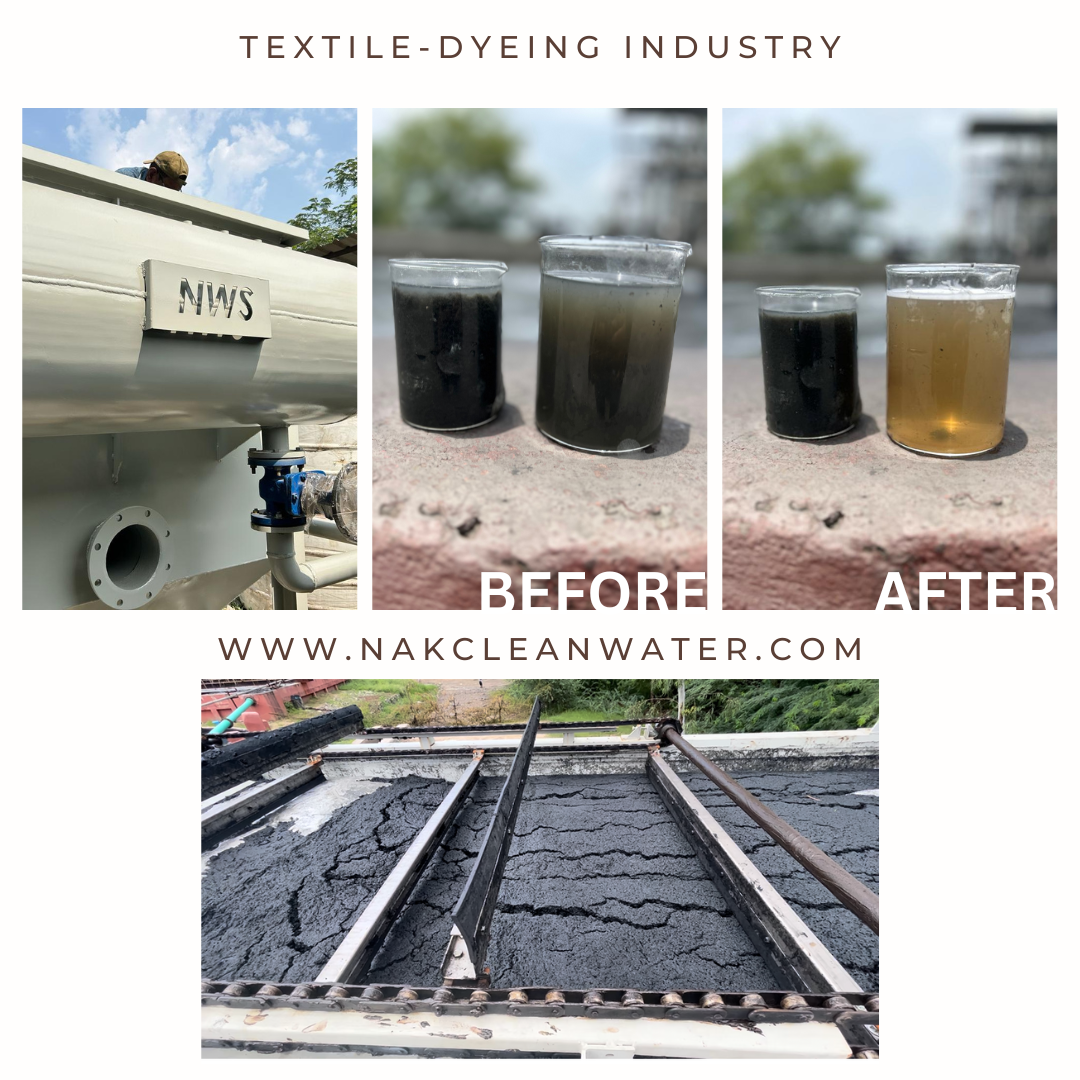
A significant amount of intricate components are found in textile dyeing wastewater, containing high levels of organic matter, color, and variable properties. Wastewater from dyeing cotton with reactive dyes is heavily polluted due to its high levels of BOD/COD, coloration, and salt content. There are a few highly effective technologies commonly used for treating textile dyeing wastewater. In this article, we will outline three methods for treating textile dyeing wastewater.
CUSTOMER FACE PROBLEM
One of our customers in Rajasthan is dealing with a challenge in treating textile wastewater using a complete Zero Liquid Discharge (ZLD) system. Their current process involves tertiary treatment, biological treatment, and a secondary clarifier. However, due to the inefficiency of the clarifier, a significant amount of Total Suspended Solids (TSS) and biological load bypass the tertiary treatment, leading to an increased load on the membrane systems. As a result, they require a solution to polish the wastewater for seamless operation.
We provide Solutions
To address this challenge, we proposed and installed a Dissolved Air Flotation (DAF) system to polish the wastewater and alleviate the load on further tertiary treatment. The DAF system effectively decreases the biological load, TSS, and associated COD/BOD levels. Prior to the installation, approximately 5770 mg/L of TSS bypassed the further processing stages due to the inefficiencies in clarifier settings and poor settlement of biological load. Following the installation, the TSS load was significantly reduced to 207 mg/L, representing a reduction of over 95%. As a result of this improvement, our customer is now able to operate the plant with increased efficiency, without needing to invest in another civil-based clarifier and incurring additional land and civil costs. The single DAF system directly integrated into the wastewater stream effectively reduces all parameters, resulting in the complete polishing of textile wastewater. Consequently, the plant can now smoothly operate with the complete ZLD system and reuse the wastewater for its processes.
The NWS DAF equipment has the following features has the following particular characteristics:
- Processing of polluted waters of low or medium load, including those containing particles of low buoyancy
- Compact system
- Unique sludge dewatering and disposal system, producing a large sludge concentrate.
- Efficient laminar flow system
- Low maintenance and easy to operate
- Customizable
This DAF equipment can also be used in the following industrial activities:
- Meat industries
- Textile production
- Processing plants
- Oil industry
The main advantage, among others, of using NWS-DAF in textile dyeing & printing industry is the better clarification performance compared to conventional clarifier treatments for the removal of water with high concentration of solids, colorants, fluorides, etc.
